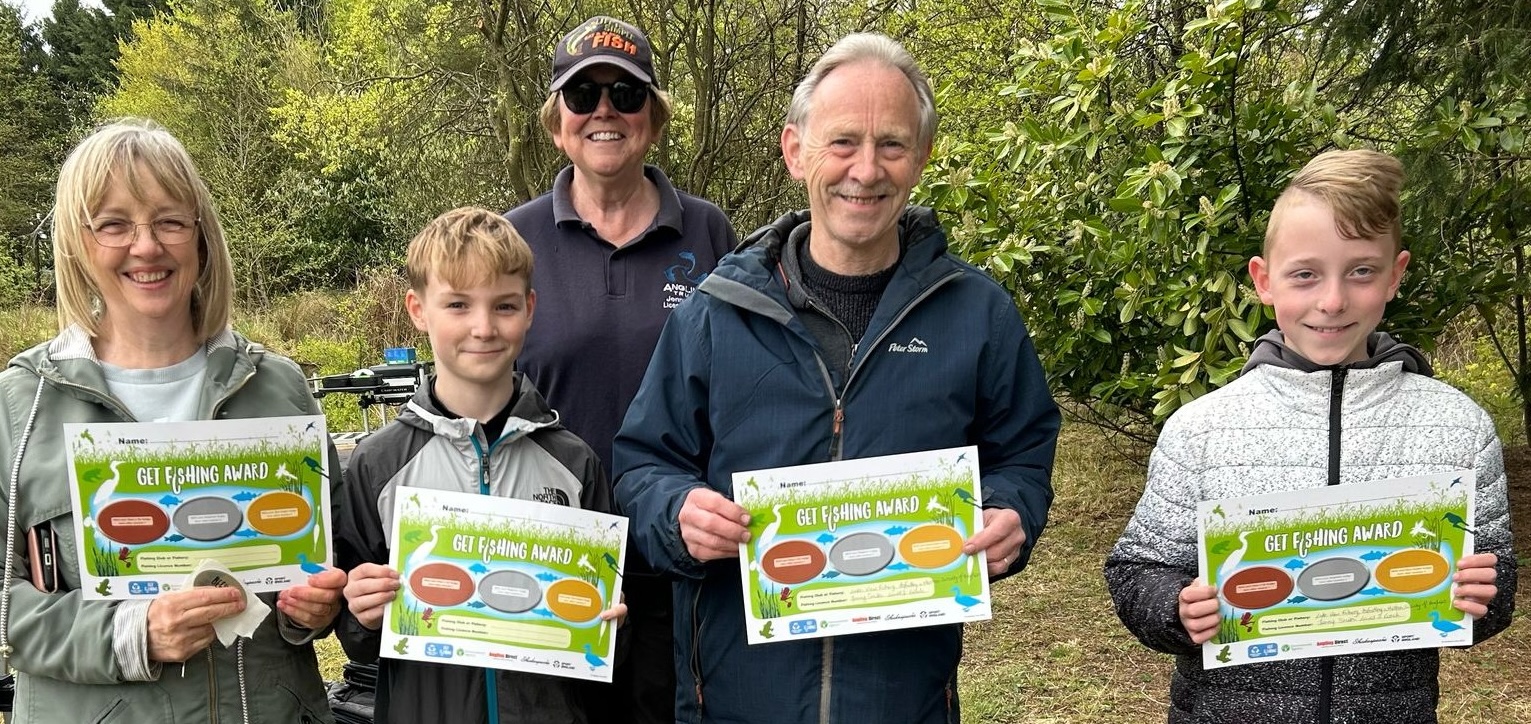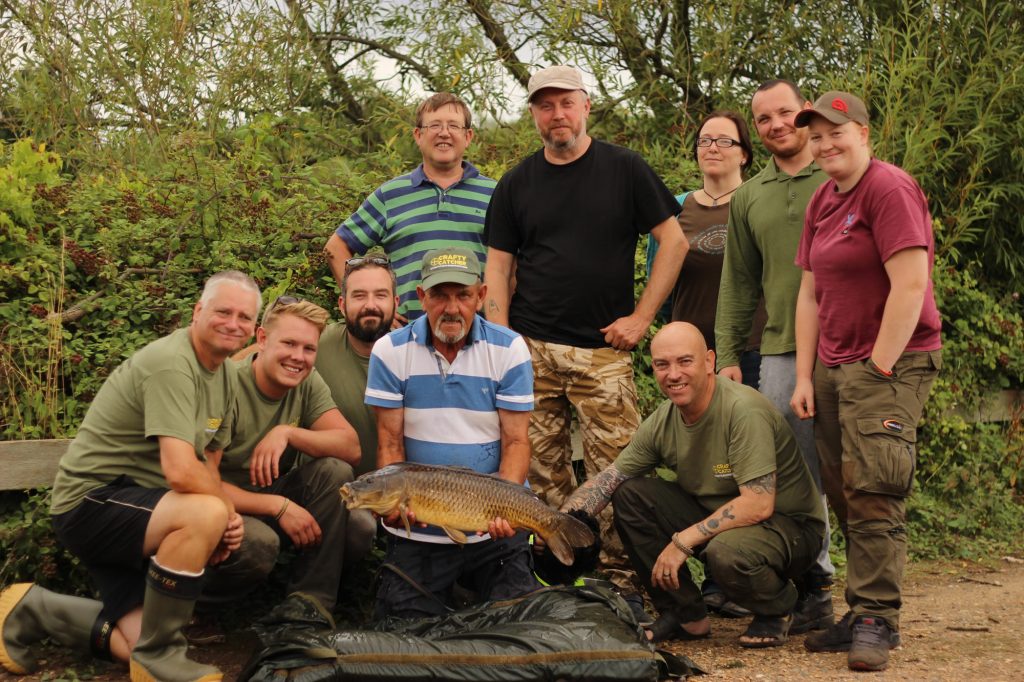
Get Fishing Resources
One million people more active, and fishing wants to contribute
The latest Active Lives Survey shows that 1,015,700 million more people are active now – that’s the highest ever recorded since the survey started in 2015.
The survey also found that being more active can benefit mental health with active people feeling more satisfied, happier, less anxious and that they do “worthwhile” things. It also shows that the number of inactive adults has fallen by 131,700.
The decrease in inactivity has been spearheaded by women and adults over 55 being more active. These are two groups that Sport England has focused on in its Towards an Active Nation strategy with campaigns such as This Girl Can and We Are Undefeatable, both supported by the Angling Trust’s Get Fishing initiative.
Tim Hollingsworth, Chief Executive at Sport England said: “It’s really excellent news that a record number of people are now active every week and that we’re also seeing a significant decrease in the amount of inactive people. It shows us that efforts to help more people get active are starting to make a real difference, particularly for older adults, women and those with a disability or long-term health condition. While there are complex barriers that stop less well-off people from getting active, this is an unacceptable inequality and one we’re starting to address in the work we are doing across the country – including piloting programmes in 12 local areas to tackle inequality.”
Clive Copeland, Head of Participation at the Angling Trust has been coordinating its successful Get Fishing campaign for 5 years, during which time over 70,000 people have taken part in events across England. Clive said “We know that angling has proven benefits for fitness, and the new Active Lives Survey results are a boost to our belief that angling, no longer regarded as a sedentary sport, is a great way to take part in activity regardless of age, gender or background. Fishing enables more people from more diverse backgrounds and incomes to be active, better connected with the environment and to benefit from improved physical and mental health, and wellbeing.”
The news comes shortly after the release of “Angling for Good” a new National Angling Strategy for 2019 – 24, which has been launched to encourage wider participation in angling by focusing on new audiences and the health and well-being benefits that the sport can bring.
The strategy was written to specifically get more people fishing by switching attention to new audiences and by really celebrating the health benefits of going fishing. It aims to bring increases in females, young people and black, Asian and ethnically diverse communities taking part in angling.
The strategy would also like to see an increasing economic impact by angling – especially in rural and coastal communities partly by bringing revenue to fishing clubs, fisheries and businesses.
Stats from the Active Lives Survey…
Women:
- Weights, interval and gym sessions have seen significant increases in popularity for women.
- There are 142,000 fewer inactive women over the last twelve months (5,948,100 women are currently inactive), and an additional 254,200 more active women in the last twelve months (14,103,900 women are currently active).
- The gender gap remains, with men more active than women, however the gap is narrowing.
Older adults:
- Running, weight sessions and gym sessions have grown in popularity for this age group.
- There are 100,700 fewer inactive adults aged 55+ (5,592,400 older people are currently inactive), and an additional 506,700 more active over 55s in the last twelve months (9,137,800 currently active).
Disability / long-term health conditions:
There has been an increase in activity levels (216,300 more) and a decrease in inactivity levels (107,800 fewer) amongst people with a disability or long-term health condition, showing efforts to support these groups are working. However, they are still twice as likely to be inactive than people without a condition or disability, so work continues to support and inspire people into physical activity such as the new campaign We Are Undefeatable, led by 15 of the leading health and social care charities and backed with National Lottery funding and expertise by Sport England.
People in lower socio-economic groups are still less likely to be active.
- People who are less affluent are the most likely to be inactive (33%) and the least likely to be active (54%) compared to those who are the most well-off (who are 16% inactive and 72% active).
- A complex backdrop of economic and health inequalities magnifies the impact of barriers to getting active felt by all, such as confidence or knowing where to go, through to cost, lack of time and appropriate opportunity.
Fitness and activity trends were also revealed in the survey:
- Walking for leisure or travel remains the most popular activity, with 477,800 more people walking for travel (15,247,600 people walk for travel) and 514,000 more walking for leisure (19,162,200 people walk for leisure).
- Fitness activities are becoming even more popular, especially for women and those in older groups, with 398,000 more people taking part (13,766,300 people do fitness activities). Weight sessions are increasingly popular, with this type of fitness being easily adapted for different groups, e.g. strength and balance for older people.
- Yoga and Pilates continue to grow in popularity.
- Racket sports continues to decrease in popularity (111,400 fewer people taking part).
- Netball enjoyed a growth in popularity with 50,200 more people taking part (319,400 people play netball), with a diverse audience of younger and older women attracted through grassroots programmes like Back to Netball.
Will Smith
Angling Promotion Manager, Angling Trust
will.smith@anglingtrust.net
About Sport England
Sport England is a public body and invests up to £300 million National Lottery and government money each year in projects and programmes that help people get active and play sport.
It wants everyone in England, regardless of age, background, or level of ability, to feel able to engage in sport and physical activity. That’s why a lot of its work is specifically focused on helping people who do no, or very little, physical activity and groups who are typically less active – like women, disabled people and people on lower incomes.
*To define what ‘active’ means Sport England, who run the survey, use the Chief Medical Officer’s recommended 150 minutes a week of moderate intensity physical activity.
About The National Angling Strategy
The National Angling Strategy 2019-2024 was launched on June 20th 2019. It will be implemented by a new partnership body – the National Angling Strategy Partnership Board, coordinated by the Angling Trust with representatives from the Environment Agency, Canal and River Trust, Angling Trades Association and Get Hooked on Fishing. The strategy was researched and written by Adam Brown, Head of Research at Substance after widespread consultation with the angling community – read more and download the National Angling Strategy at www.substance.net/feature-pages/nationalanglingstrategy/
You might also like

Get Fishing Fund – Funded Project Blog: Steve Clamp…

Somersham Angling Club hosted some fabulous Get Fishing events…

We want a water industry fit for purpose

VIDEO: What are your favourite fishing moments?! – Get…

Another year of anglers’ data reveals another year of…

Get Fishing Fund – Funded Project: ‘Summerhayes Junior Angling…

Get Fishing Fund – Funded Project: Your project could…

Will the UK-EU Fisheries Deal Deliver for Sustainability and…

The smile says it all! Kayson is hooked! –…

Our Man with a Mullet! Dean Asplin, enjoys a…

Underdog Crew hosts top draw fishing events with Hintlesham…

NEW BLOG: Fishing helped my Peaceful Place members with…

Get Fishing Fund – Funded Project Blog: Steve Clamp…

Somersham Angling Club hosted some fabulous Get Fishing events…

We want a water industry fit for purpose

VIDEO: What are your favourite fishing moments?! – Get…

Another year of anglers’ data reveals another year of…

Get Fishing Fund – Funded Project: ‘Summerhayes Junior Angling…

Get Fishing Fund – Funded Project: Your project could…

Will the UK-EU Fisheries Deal Deliver for Sustainability and…

The smile says it all! Kayson is hooked! –…

Our Man with a Mullet! Dean Asplin, enjoys a…

Underdog Crew hosts top draw fishing events with Hintlesham…

NEW BLOG: Fishing helped my Peaceful Place members with…

Get Fishing Fund – Funded Project Blog: Steve Clamp…

Somersham Angling Club hosted some fabulous Get Fishing events…

We want a water industry fit for purpose

VIDEO: What are your favourite fishing moments?! – Get…

Another year of anglers’ data reveals another year of…

Get Fishing Fund – Funded Project: ‘Summerhayes Junior Angling…

Get Fishing Fund – Funded Project: Your project could…

Will the UK-EU Fisheries Deal Deliver for Sustainability and…

The smile says it all! Kayson is hooked! –…

Our Man with a Mullet! Dean Asplin, enjoys a…

Underdog Crew hosts top draw fishing events with Hintlesham…









